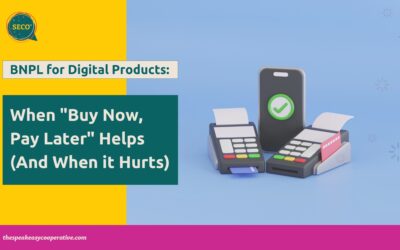If you are a voice teacher that begins their tuition plans in September, follows the school year, and loves it, this blog isn’t for you.
If you are a voice teacher who uses the school year as your tuition and is left irritated and scrambling in the summer, or even in the best of times just can’t seem to get your head around saving up for summer slowdowns in revenue, or is beginning to question why you did this in the first place, this blog is for you.
I get the draw of the school year calendar. We seem to get a lot of perks with a school year tuition model.
Some of the arguments I hear for a school year tuition model are:
- Summers off
- Oh wait, that’s the only one I hear
If you’re ready to break free from the 10-month Calendar-dependent model, and head into an annual or some other many-months-long rolling tuition model, read on.
Moving students from a ten-month, September-May commitment, into a year-long commitment, may be the best way to get back your Summer, reduce your financial stress from June to August, and create a more effective learning environment for your studio.
The Myth of the Summer Off
I want to address this concern head-on. Most people who love the school year love it for summers off.
But are they off, really? And who needs summers off?
Without fail, every mid-July and all through August, I get The Great Wave of Teachers Needing to Send Out Offers coming to ask about what to create for their studios that will serve their lifestyle better, or make them more revenue to account for the cost of living increase. Additionally, they need support in learning to manage their time, because year after year, the last six weeks of summer seem to be sucked away by policy revisions and getting students to come back for Fall registration.
The “Summer off” turns into a “Summer of no teaching”, but is a far cry from not working.
Michelle Markwart Deveaux
The “Summer off” turns into a “Summer of no teaching”, but is a far cry from not working. There is the work of getting money coming in when it’s slow, the work of getting next year’s policies and offers set up, the work of tracking down busy families to get registrations and scheduling set. And that isn’t a “Summer off”.
Who needs Summers off? People who are stressed out and overworked do. In the school-year model, time isn’t spacious, so the summer turns into a great re-charging time. Problem is, you’re too burned out to enjoy it and spend half the thing laid out in front of Netflix anyway. (I love me some good laid in front of Netflix time, by the way. teehee!)
The Myth of the Summer off is a holdover from a business model that is not our model – the academic school year. Work like hell for ten months, then get your reward of “rest”. This concerns me, especially when it’s not necessary, and now that the pandemic times exhausted us all six ways from Sunday.
How about this, instead? Work at a peace-filled and noble pace throughout the year, take off all the time you desire, get paid every month, and be rested and well-tuned most of the time.
An annual rolling tuition model can give you all of this, even in summer.
Year-long tuition gives you the opportunity to pace yourself and your students, so that deep learning can occur more naturally and with less stress. There is plenty of time for stressed-out singing in the academic/school-year model. We don’t have to add to it.
By the way, you’ll definitely want to read this article I wrote next: “Battling Pricing Pitfalls: Pricing Strategy for Today’s Studio Owner.”
(Journal of Singing, vol. 75, no. 4, Mar.-Apr. 2019, pp. 455+, if you are a NATS member)
What does Year-Long Tuition look like?
Because our field is still learning to shift away from the time = money way of thinking, the thought of people paying an installment for services not rendered seems ludicrous.
Hear me out. This is what I mean when I say “Year Long Tuition”:
- It is a twelve month commitment
- It is rolling enrollment
- The amount of time off and number of lessons and extras are built into the calendar year
- Tuition pricing is a grand total, with the option to pay in one chunk, or in installments
- The cost of running this program is built into the budget
Let’s break these points down.
Twelve Month Commitment
When we have newer students or younger students, we know that in terms of learning, it’s gonna take a while. ANYONE can do the “tips and tricks” lesson and get a singer to sound completely different in one session – especially if they are a beginning singer.
To gain measurable, long-term results, we’ll need at least a year. Committing for a year may *seem* like a long time, but it really isn’t.
Now that travel is both limited and limitless due to online resources, the need to “stop” for the summer goes away. In some cases, the summer is the perfect time to lean in.
The tuition model generally serves the families of school-age children, hence the leaning into the September-May plan. Few adults would choose this for themselves, as their life timelines aren’t bound by the school calendar.
Not all kids are on a traditional school year (mine aren’t!), and more likely than not, your studio is filled with kids from different districts with different closure dates.
The twelve-month commitment allows you to run on your own timeline so you aren’t beholden to school closures and sets up a lovely expectation for your families.
Rolling Enrollment
Rolling enrollment means that anyone can sign up at any time – there’s no prorating, no having to figure out what to charge someone if they want to start in February. If a student begins in February 2022, their contract ends in January 2023. If a student begins in August of 2022, their contract ends in July of 2023.
The amount of time off and number of lessons and extras are built into the calendar year
Here’s the gold, my friends.
Again, YOU get to choose when you are open or closed. Do you want to take six weeks off in summer? GO FOR IT.
Maybe you want only three off? ALSO FINE.
Many teachers that I’ve worked with to adopt this fee structure take 10 weeks off a year, are open for 42 weeks, and offer a program that includes 38 lessons. (This means that while the studio is open for 42 weeks, there are 4 weeks that can be used as “bonus” weeks. Students can come, or they can cancel with no penalty.)
Ten weeks off, in the USA, can look like this:
- One week for Spring Break
- Six weeks in Summer (sometimes consecutive, sometimes broken up)
- One week for Thanksgiving
- Two weeks for End of year holiday/winter break
Or maybe you’d like seven weeks off, like this:
- One week end of March
- Two weeks end of June or beginning of July
- One week end of August
- One week for Thanksgiving
- Two weeks end of December/Early Jan
Or maybe you get fancy and take the whole summer thing anyway (12 weeks off, total!):
- One week Spring break
- Eight weeks in Summer
- One week Thanksgiving
- Two weeks end of December/Early Jan
OR, you really go off the rails and take time off more frequently, for shorter bursts (here’s my studio calendar for next year!):
- One week end of February
- One week Spring break – April TBD
- Two weeks beginning of Summer – NATS National conference so I can talk about pricing
- One week end of Summer, around beginning of September
- Two weeks October (For SECOLIVE 2022! The SpeakEasy Cooperative’s in-person conference)
- One week Thanksgiving
- Two weeks end of December/Early Jan
- One “TBD” week that I will use at my discretion in case I wanna
Notice with my schedule, it’s still ten weeks of studio closures, and I build in times for continuing education and rest and professional development, while also being in the studio enough to give robust education year-round. Win-Win! No burnout! And since I tell all the families the calendar ahead of time, they know when they get a break too, and can plan accordingly.
Tuition pricing is a grand total, with the option to pay in one chunk, or in installments
You’ll determine your tuition rate based on the number of weeks you’re open during the year and your billable hour. (Billable hours are calculated by understanding your budget and the number of hours you’ll be selling.)
If you are open for 42 weeks, and your billable hour is $100, your 12-month tuition cost is $4200. Families can pay all at once, or in 12-months of monthly installments. Which means you get paid 12 months a year, or the equivalent.
You’ll need to be clear about this so that people understand why they are paying the same amount even if there are fewer lessons in a month. People who have gotten used to a “pay per service” will take a minute to switch their mindset.
You *can* choose to add a small percentage increase to the monthly installments, to cover any admin and the fact that you are essentially financing their lessons spot until they have paid in full – like a line of credit.
I have mixed feelings on this, depending on the cost of the tuition and the reasons why we’d incentivize or not, but that’s for another blog.
*NOTE: Be mindful when you take “pay in full” to set aside all the taxes for the year you are paid. Service-based micro and nano businesses usually use a cash-based accounting system, which means you have to count the income when you receive it, not when it’s earned. It’s possible to switch to an accrual-based accounting system, but you’ve gotta jump through hoops for it. Read more about that, here.
The cost of running this voice teaching program is built into the budget
I assume that you’ll do the budgeting upfront to know how much you want to make so that you can plan appropriately. As mentioned above, you’ll need to figure out your billable hour.
Part of that is understanding what it costs to run your tuition program. Will you have masterclasses included? Auditions and competitions? Sheet music/digital music purchases? What software/hardware will you use? Taxes? Your continuing education and professional development? Merchant fees to enable you to take credit?
The beauty of tuition is that you never have to worry about spending money on your students, or how much things will cost, or if you’re losing money on things because you already accounted for it.
The only thing you may find is that you thought too small, and didn’t have enough items in your budget!
The Best Part – You can start RIGHT AWAY and TWEAK as you Go – You’re not stuck!
Does this sound appealing to you? GREAT!
Even if you’ve already begun September-May tuition, you can change it up FOR JANUARY 2022!
Yes, you heard me right!
You can adopt this new model for all incoming students starting right away, and even offer existing students the opportunity to switch over.
My favorite part of a year-long rolling tuition model is that we are never beholden to certain months, never have to prorate, and never have to worry about getting time off. AND we always have the ability to tweak it for the next student coming in, if we find we need to.
The “what if it doesn’t work right” fear gets booted to the curb, and the “let’s experiment till we get it right for my studio” mojo comes in beautifully!
I hope this allows you to think outside the calendar, make some brave end-of-year changes, and consider that maybe, just maybe, that school year tuition model doesn’t need to be a thing.
And if you’re struggling with pricing model strategy, read my article here next.
If you’re wondering if this is the thing we talk about in The SpeakEasy Cooperative, the answer is YUP. ALL THE TIME.
And we’d love for you to join us in the chat!
As always, let me know how this is sitting with ya, and what you may want to incorporate!
All My BeastyBoss,







0 Comments